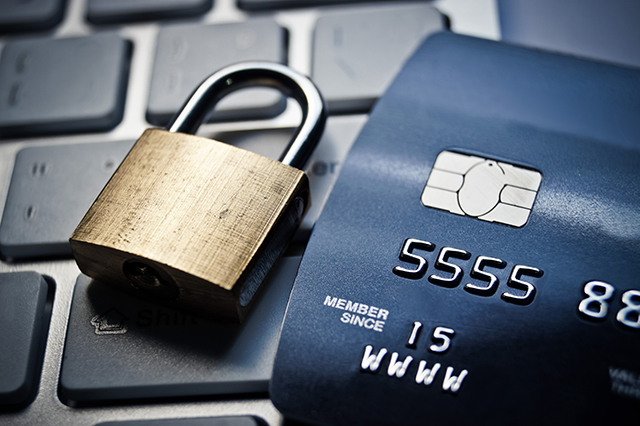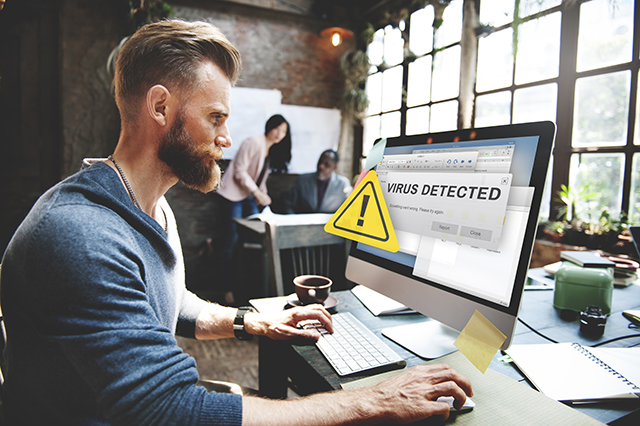Online shopping is just a normal part of life these days, but have you ever stopped to wonder whether the websites you’re visiting are secure before you give them sensitive credit card information? Most shopping websites are encrypted, which makes for safer browsing and shopping, but how can you tell you’re on an encrypted site? Here are some tips for steering clear of unsafe websites and keeping your information safe online.
How do I know if this website is safe?
Security breaches happen all the time, even in the biggest companies that claim to be the most secure. While there will never be a 100 percent guarantee that your information won’t be compromised, there are steps you can take to ensure you don’t visit an unsafe website.
- Never enter a website through an email link – As a general rule, if you receive an unsolicited link in your inbox, you shouldn’t click on it. Hackers often pose as legitimate companies and then email links in hopes that an unsuspecting recipient will open them and share personal info.
- Type in the URL by hand – Do not simply click on links if you don’t trust the source.
- Check your status bar – Is there a lock icon in your status bar? This is a good sign that the website you are visiting is safe.
- Make sure you shop on encrypted sites – Secure, encrypted sites will begin with “https.” Sites that begin with “http” may be fine for browsing, but they aren’t secure enough to handle your personal information.

Sure signs of unsafe websites
Unsafe websites are easier to spot than you might think. We mentioned the difference between http and https above, but what exactly does it mean? Keep reading to learn about it and to answer “when is a website safe?”
No SSL certificate
SSL Certificates are data files that bind a cryptographic key to the personal details of a business. When installed on a company’s web server, the SSL certificate activates the https protocol and allows secure connections from a web server to a browser. This is most often used to secure credit card transactions, data transfers, and passwords. An online business needs to install the SSL Certificate onto its server to initiate a secure session with browsers. Once a secure connection has been established, information that is submitted to the website will be encrypted.
Legitimate business secure an SSL certificate by going through a validation process, but there are a few levels of validation. Most legitimate owners of a domain can simply pay a fee and request an SSL certificate. This does not validate the legitimacy of the business. The highest level of validation is an EV or extended validation. This proves the identity of the business owner and the legitimacy of the business. If a site has an EV certificate, it will show a green address bar with a lock icon.
Too many pop-up ads
Pop-up ads are annoying at best and potentially dangerous at worst. Most legitimate retailers won’t use them because they know that consumers despise them. If you shop on a https site with a pop-up ad, you’re probably okay, but if you’re getting one after another, take your business elsewhere. This probably goes without saying, but never click on those pop-up ads either. Clicking on ads will often bring you to a phony website, created especially to steal your personal information.
No contact information
Reputable websites will make it easy for you to contact them if you need customer support. They should be clear about their email address, physical address and phone number. If you are unsure about a website’s listed phone number, give it a call and see if you get a person on the other end. Steer clear of any online shopping experience that doesn’t have contact information on their website.
Keeping your personal information safe in the digital age
Now that you know how to spot a fake or suspicious website, you need to take a few additional steps to keep your credit card info and personal data safe.
- Use a strong virus protection software – Phishing attacks, malware, trojan horses and viruses can all infiltrate your computer when you least expect it. You owe it to yourself and your bank account to install a powerful anti-virus software on your computer.
- Don’t shop over public Wi-Fi – When it comes to entering credit card information, public computers and/or Wi-Fi networks are risky business. It’s best to do online shopping on your secure home network.
- Keep some info to yourself – Online websites should never ask for your birth date or your social security number. If they do, you may want to take your business elsewhere.
Have you ever been the victim of theft or fraud because of shopping on unsafe websites? How did you handle it and what tips can you share with our readers? Share your advice in the comments section below.
2 Thoughts on “Steer Clear of Unsafe Websites and Keep Your Credit Card Info Safe”
Leave A Comment
Comments are subject to moderation and may or may not be published at the editor’s discretion. Only comments that are relevant to the article and add value to the Your AAA community will be considered. Comments may be edited for clarity and length.















Thanks for all your advice and tips. It’s a scary world!
Hi Charlotte!
Thanks for reading! I have a 12-year-old, so I’m alllllways monitoring what’s going on online. Well, as much as any mom can, anyway. 😉
-Dana